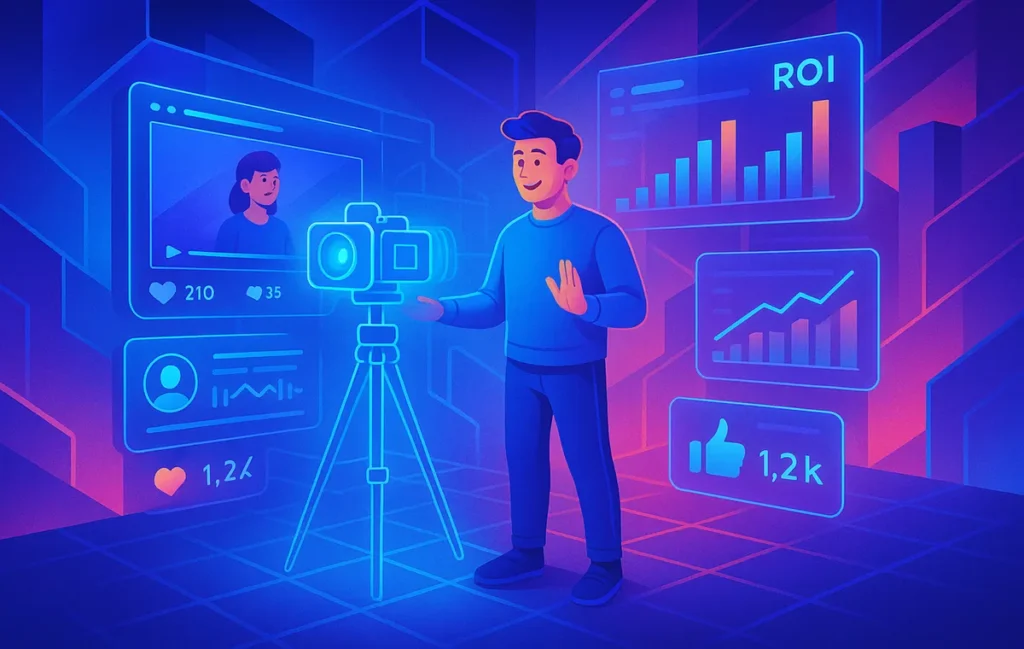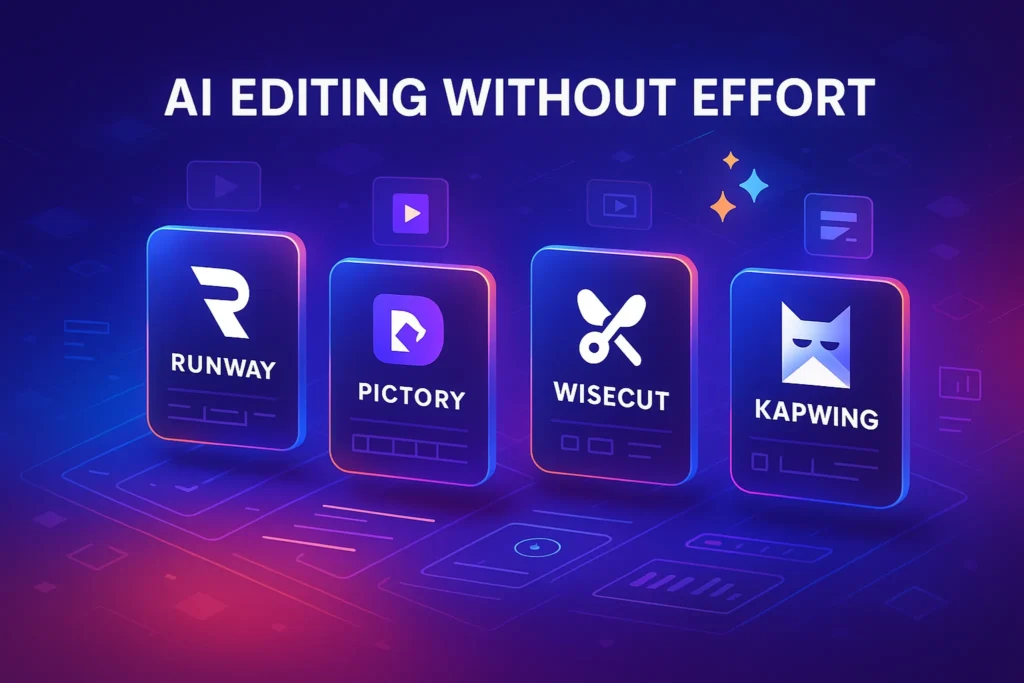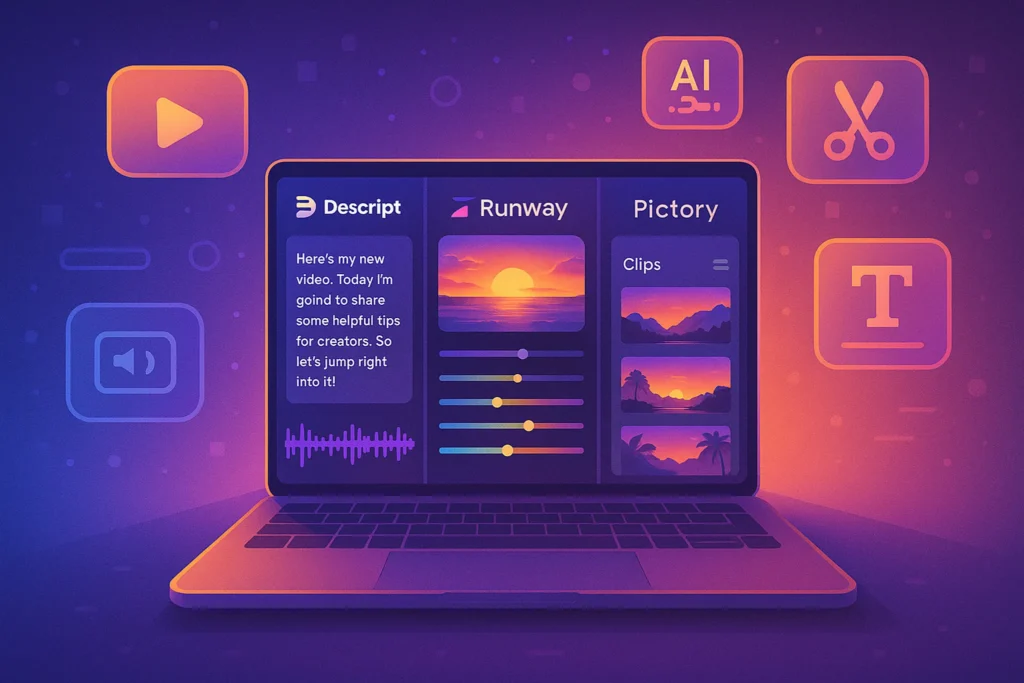🎬 Why Influencer Video Campaigns Still Win in 2025
Video hasn’t just held its ground—it has expanded its dominance. By 2025, over 80% of online content consumed daily is video-first, with short-form clips on TikTok, YouTube Shorts, and Instagram Reels shaping cultural conversations faster than ever before. But raw reach is no longer enough. Brands and creators are under pressure to deliver measurable returns, not vanity metrics.
Influencer video campaigns remain powerful because they combine three things: reach, trust, and storytelling. Unlike display ads, influencer-led videos embed a product or service into the creator’s authentic voice. This authenticity translates into higher engagement and stronger conversions. According to recent industry benchmarks, influencer video campaigns deliver an average ROI of 5.2x compared to standard paid video ads.
💡 Nerd Tip: Authenticity is no longer optional—audiences in 2025 can instantly sense scripted promotions.
📈 Setting Your Campaign Objectives the Smart Way
Every winning campaign begins with clarity. Too many brands still launch influencer video pushes without a defined outcome, and the result is wasted ad spend. In 2025, campaigns are being judged on precision KPIs such as engaged view-through rate, retention beyond 15 seconds, and ROI attribution through AI-driven analytics.
Instead of vague goals like “increase awareness,” brands now define objectives around measurable actions. For example, a SaaS startup might set its goal as “acquire 1,000 trial sign-ups via influencer campaigns at a $20 CPA.” Meanwhile, an e-commerce brand could focus on “achieving a 15% lift in product-specific conversions during a two-week influencer push.”
This approach makes ROI tracking easier. With tools that integrate video analytics and influencer dashboards, marketers can trace each campaign’s direct impact. In fact, platforms now combine influencer video metrics with YouTube SEO optimization, ensuring discoverability long after the sponsored post goes live.
💡 Nerd Tip: Define ROI not only in sales but in long-tail benefits like brand trust, content repurposing value, and SEO lift.
🎯 Choosing the Right Influencers in 2025
The days of chasing mega-celebrities with millions of followers are fading. Campaigns in 2025 thrive on micro-communities and nano-influencers, where niche credibility beats raw numbers. A fitness brand working with a trainer who has 25k engaged followers can generate stronger ROI than a generic placement with a celebrity athlete.
AI-driven discovery platforms now analyze influencer authenticity scores, audience demographics, and even comment sentiment. This means marketers can spot “bought followers” instantly and avoid fake engagement traps.
A campaign becomes truly effective when the influencer’s personal story aligns with the brand narrative. For example, a tech creator demonstrating workflow hacks can naturally integrate automation tools, tying into larger conversations about social media marketing efficiency.
💡 Nerd Tip: Always check comment authenticity. A high follower count with low comment depth is a red flag.
🎥 Crafting Videos That Convert
Influencer video campaigns succeed not only because of who delivers the message but how it is delivered. Winning content in 2025 uses the “first 3-second hook” principle. Creators are opening with pattern-breaking visuals or statements, immediately signaling value.
Video design has shifted from passive demonstrations to interactive storytelling. Features like embedded polls, shoppable tags, and split-screen reactions are now standard in influencer campaigns. A beauty influencer, for example, might integrate a product comparison table in real-time, making it feel like a natural part of the content rather than an ad.
Marketers are also leveraging AI video editing tools to repurpose long-form influencer content into micro-clips optimized for Shorts, Reels, or LinkedIn. This tactic extends campaign shelf life and amplifies ROI. If you’re curious about advanced editing workflows, exploring the Best AI Video Editing Tools Reviewed can unlock automation opportunities for your campaigns.
💡 Nerd Tip: Plan for repurposing before you even launch. Design videos that can live across multiple platforms.
⚡ Tools That Power Influencer Campaigns
2025 is the year of AI-enhanced influencer marketing stacks. Beyond matchmaking platforms, brands now rely on integrated systems that manage every stage—from discovery to ROI reporting.
Key features in today’s tools include:
-
Automated influencer vetting with real-time fraud detection.
-
Engagement heatmaps to track viewer drop-off points.
-
AI-powered editing and captioning for multi-platform optimization.
-
Direct ROI dashboards tying video performance to conversions.
Creators, on the other hand, use automation layers to streamline editing, track affiliate clicks, and manage content calendars. Combining campaign management with content marketing platforms ensures a smoother workflow and greater consistency.
⚡ Ready to Build Smarter Video Campaigns?
Leverage the next generation of influencer platforms and AI video tools to maximize ROI and cut production time in half. Your strategy deserves smart tech.
🔍 Case Study: When Campaigns Win (and When They Fail)
Let’s contrast two real-world style scenarios from 2025:
-
Failure: A global sports drink hired a celebrity athlete with 10M+ followers to promote a new hydration product. The video launched on YouTube and Instagram but felt forced—comments highlighted the lack of authenticity. Engagement dropped below industry benchmarks, and despite 2M views, conversions were under 0.5%. The campaign cost $1.2M but generated only $600k in trackable sales.
-
Success: A mid-tier wellness brand worked with five nano-influencers (10k–25k followers each), all local fitness coaches. Instead of one big launch, they created a sequence of live sessions, tutorials, and authentic testimonials. Their collective reach was 300k, yet conversions hit 4.2%, with ROI exceeding 6.5x. The campaign cost just $120k and delivered $780k in direct sales plus long-tail SEO value.
💡 Nerd Tip: A smaller, community-driven campaign often beats the “one big star” strategy—especially when budget efficiency matters.
💰 Budget & Cost Breakdown for Influencer Campaigns
Budgeting in 2025 requires smart allocation. A typical influencer video campaign can be split as follows:
-
Content Production (25–30%): Covers video shoots, editing, AI-enhanced effects, and repurposing.
-
Influencer Compensation (40–50%): Fees vary widely but nano-influencers charge far less than celebrities, with higher ROI potential.
-
Paid Boosting (15–20%): Paid media ensures the video reaches audiences beyond the organic base.
-
Analytics & Tools (10–15%): Includes influencer dashboards, ROI trackers, and campaign management platforms.
Marketers that overspend on talent while underfunding analytics often lose visibility into what actually drives sales. Successful brands keep budgets balanced across production, promotion, and performance measurement.
💡 Nerd Tip: Treat analytics as non-negotiable—it’s the only way to prove ROI when budgets are under scrutiny.
⏳ Timeline & Workflow of a Campaign
Running an influencer campaign isn’t an overnight play. A well-structured workflow looks like this:
-
Week 1–2: Research & Influencer Vetting
AI platforms are used to validate audience authenticity and engagement levels. -
Week 3–4: Content Development & Storyboarding
Brands collaborate with creators to ensure storylines feel authentic, integrating content marketing platforms for calendar management. -
Week 5–6: Production & Publishing
Videos are shot, edited, and optimized for multiple channels—often with built-in live streaming 101 activations. -
Week 7–8: Promotion & Paid Boost
Content is amplified through paid campaigns, maximizing reach within target demographics. -
Week 9–10: ROI Tracking & Reporting
Analytics dashboards evaluate conversions, affiliate performance, and SEO lift.
💡 Nerd Tip: Build reporting checkpoints into your timeline, not just at the end.
🌐 Future Outlook: 2026 and Beyond
Looking ahead, influencer video campaigns are set to evolve in bold ways. AI avatars are emerging as influencers in their own right—some already commanding sponsorships with six-figure deals. Virtual humans offer 24/7 availability and perfect brand compliance, but they risk lacking the authenticity of real creators.
Meanwhile, metaverse-native campaigns are on the horizon. Imagine influencer-led VR experiences where users can interact directly with products in 3D environments. Early pilots in gaming show engagement rates doubling compared to standard video.
For brands and creators, the future means blending human authenticity with cutting-edge tech—those who balance both will lead the next wave of influencer marketing.
🔄 Measuring ROI Beyond Views
Views are a vanity metric. Smart marketers in 2025 focus on engagement-adjusted ROI. This includes metrics like click-through-to-purchase ratio, affiliate link performance, and long-tail SEO traffic generated from influencer content.
Take live content as an example. A brand might host a live streaming campaign with influencers, then repurpose the event into evergreen video content. That single activation can generate results across months, blending awareness, conversion, and retention.
By connecting influencer campaign data with advanced content marketing platforms, companies can attribute ROI across channels instead of treating each campaign as an isolated event. One beverage brand reported that linking influencer video data with its e-commerce funnel increased attributable ROI by 18% year-over-year.
💡 Nerd Tip: Always compare ROI across campaign types—sometimes micro-influencers outperform big names by 3–4x efficiency.
📬 Want More Smart Video Marketing Insights?
Subscribe to our free newsletter and get weekly deep-dives on influencer campaigns, AI video tools, and future marketing strategies. No spam. Just sharp insights from NerdChips.
🔐 Privacy guaranteed. Pure insights, zero noise.
🧠 Nerd Verdict
Influencer video campaigns in 2025 aren’t just about collaborating with creators—they’re about building measurable, tech-enhanced ecosystems of trust and storytelling. The winning formula blends authenticity, AI-driven optimization, and ROI accountability. Brands that embrace smarter influencer workflows while keeping the human touch will continue to outperform traditional paid advertising.
❓ FAQ: Nerds Ask, We Answer
💬 Would You Bite?
If you were launching an influencer campaign tomorrow, would you bet on a mega-celebrity or a trusted nano-creator in your niche?
Which do you think delivers more lasting ROI? 👇
Crafted by NerdChips for creators and teams who want their best ideas to travel the world.



